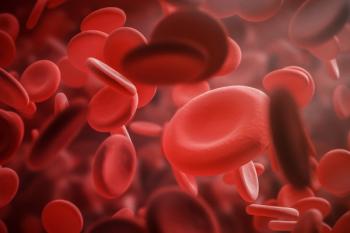
Excessive warfarin effect
Excessive warfarin effect
HEALTH-SYSTEM EDITION
CLINICAL TWISTERS
Excessive warfarin effect
A 62-year-old woman presents with suprachoroidal hemorrhage and loss of vision in her left eye following a coughing episode. Her INR is 8.2. Medications at admission include warfarin 5 mg q.d., clarithromycin (Biaxin, Abbott) 250 mg b.i.d. (upper respiratory infection), and celecoxib (Celebrex, Pharmacia) 200 mg q.d. (osteoarthritis). The patient reports she regularly takes St. John's wort, ginkgo, and vitamin E (doses unspecified). Prior to starting clarithromycin, her INR was 2.9 (target following valve replacement was 2.5-3.5). With vitamin K treatment, her INR decreases to 2.9. Before dismissal, her physician requests a pharmacist consult. What do you recommend?
The massive jump in INR and subsequent hemorrhage most likely resulted from an additive effect of multiple drug interactions. Macrolide antibiotics can reduce warfarin clearance, thus increasing anticoagulant effect. Case reports have associated the combination of celecoxib and warfarin with bleeding. Vitamin E, particularly at doses greater than 400 IU/day, can cause bleeding by interfering with vitamin K-dependent clotting factors. Ginkgo displaces clotting-activating factor from binding sites and can reduce coagulation. Some or all of these mechanisms may have been responsible for this patient's adverse experience. (St. John's wort would most likely increase warfarin clearance.)
Warfarin and celecoxib can be taken concurrently with appropriate INR monitoring. If an antibiotic is needed for respiratory infection (i.e., if the infection is bacterial), amoxicillin, unlike clarithromycin, should not have a significant INR effect.
Discuss alternative medicine use with the patient. Emphasize natural products have side effects and can interact with drugs, despite advertising to the contrary. If the patient chooses to continue taking St. John's wort, ginkgo, and vitamin E, explain that these products can affect blood clotting, and INRs will need to be closely monitored.
Gayle Nicholas Scott, Pharm.D., FASCP, BCPS, CGP
Assistant Professor, Department of Physiological Sciences,
Eastern Virginia Medical School, Norfolk, Va.
The cause of this patient's increased INR was clarithromycin. Clarithromycin is hepatically metabolized through the cytochrome P450 system, similar to warfarin. Clarithromycin will inhibit warfarin's metabolism resulting in an increased PT/INR.
Upper respiratory infections are most often of viral etiology, but the patient's replaced valve places her at an increased risk for bacterial endocarditis. She needs a full course of antibiotics. I recommend amoxicillin 500 mg t.i.d. for 10 days as an alternative agent.
Warfarin therapy should be restarted immediately because of an increased risk of thromboembolism from the replaced valve. Ophthalmology should be consulted to evaluate the extent of the suprachoroidal hemorrhage. If ophthalmology concurs, I recommend starting warfarin at her usual dose of 5 mg q.d. She needs to have PT/INR monitored every three days for one week to ensure that her INR does not become subtherapeutic from the vitamin K therapy.
I recommend stopping celecoxib because of potential risks for gastrointestinal bleed. A trial of acetaminophen 500 mg, two tablets t.i.d.-q.i.d. p.r.n. is recommended.
She may resume her vitamins and herbals. Although these medications have been reported to potentiate/antagonize the effects of warfarin, she had been using them consistently before without problems.
Elizabeth W. Young, Pharm.D., BCPS
Clinical Pharmacist
UUHSC
Salt Lake City
Are you puzzled by a clinical situation that would make a good topic for this column? Or do you relish an opportunity to test your skill in resolving a clinical challenge? Please send us a clinical scenario or indicate your interest in providing us with a patient assessment by e-mailing us at
Kathy Hitchens. Excessive warfarin effect. Drug Topics 2002;12:HSE25.
Newsletter
Pharmacy practice is always changing. Stay ahead of the curve with the Drug Topics newsletter and get the latest drug information, industry trends, and patient care tips.





























































































































